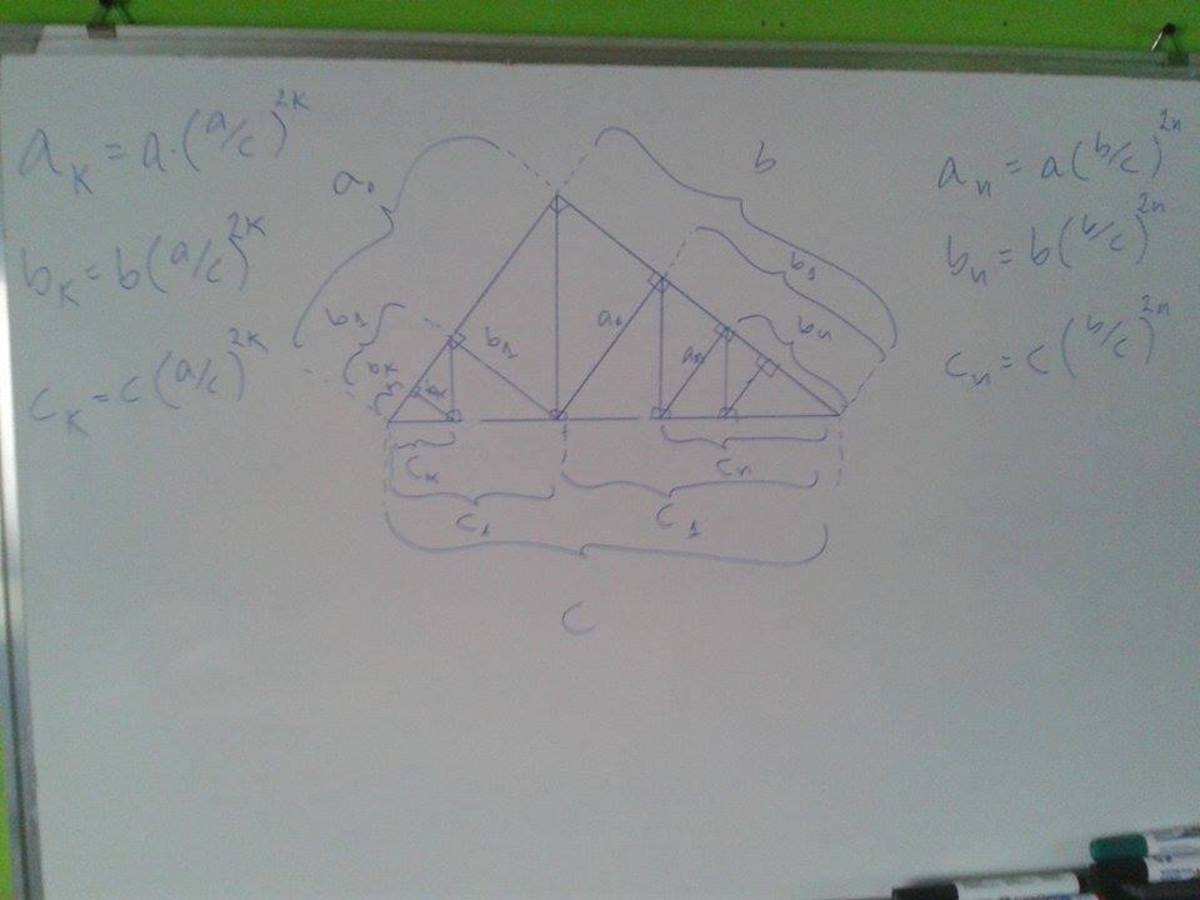A Big Doubt (Own Theorem)
A few years ago I discovered this property and it supposed to be my own Geometry Theorem. I want to know if is it real. Have you seen a Theorem like this?

As a corollary we can say:
If we let and be the foots of a right triangle with hypotenuse , we have
And
No vote yet
1 vote
Easy Math Editor
This discussion board is a place to discuss our Daily Challenges and the math and science related to those challenges. Explanations are more than just a solution — they should explain the steps and thinking strategies that you used to obtain the solution. Comments should further the discussion of math and science.
When posting on Brilliant:
*italics*or_italics_**bold**or__bold__paragraph 1
paragraph 2
[example link](https://brilliant.org)> This is a quote# I indented these lines # 4 spaces, and now they show # up as a code block. print "hello world"\(...\)or\[...\]to ensure proper formatting.2 \times 32^{34}a_{i-1}\frac{2}{3}\sqrt{2}\sum_{i=1}^3\sin \theta\boxed{123}Comments
You would need to explain the set up with some words, in order to explicitly convey what you intend.
For the triangle in the above photo we know by euclidean theorem that a2=pc, and h=cab. So it is true that - a1=bc1h - a1=bcb2cab=a(cb)2 It's easy to see that c1=c(cb)2 by euclidean theorem. And the same with b1 to get b1=b(cb)2. If you take it with the next triangles at that side you'll find that an=a(cb)2n, bn=b(cb)2n and cn=c(cb)2n And with the triangles at the other side you'll find that ak=a(ca)2k, bk=b(ca)2k and ck=c(ca)2k
My calculations in Maple show me that it's true for triangles :
(a=4, b = 8.01, c = 8.95)
(a=3, b = 4, c = 5)
(a=4.9875077, b=12.429690, c=13.392999)
Log in to reply
The corollary or the theorem?
Log in to reply
I think it's theorem, I have not seen it before.
I've seen to problem of this sort. The closed form of ak wasn't given, but we had to sum a very similar series.